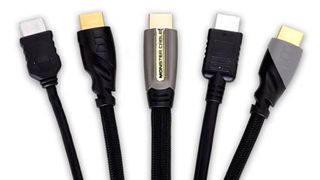Label Works 2.0

• • • The metric and label conventions presented in this document are not required for using Prometheus, but can serve as both a style-guide and a collection of best practices. Individual organizations may want to approach some of these practices, e.g.
Epson LabelWorks Pro100 Thermal & Direct Thermal Label Printer, Lowest prices with free next day delivery available. USB 2.0 Cable (3 metre), usbcable3m. ZeroTol 2.0 is a broad-spectrum bactericide/fungicide that works on contact to kill plant pathogens and their propagules, including spores. Formulated with our powerful and stable paracetic acid chemistry, use ZeroTol 2.0 starting at propagation through production to protect all greenhouse and nursery crops, including fruits and vegetables.
It is accessible without being over-simplistic. It is unsurpassed in clarity and depth. Critical thinking a concise guide 4th edition. This approach makes clear how various aspects of careful, critical thinking come together, allowing students to develop their skills along the way.” — Joshua Smith, Central Michigan University “I have been using Hughes (now Hughes & Lavery) since the first edition. And its examples, exercises, and questions for discussion offer the student unique and exciting materials for reflection and engagement.” — Ahmad Rahmanian, University of New Brunswick “This textbook stands out from others for its clarity, which is due in large part to the conceptual organization of the material it covers. Rather than artificially carving out various aspects of critical thinking for individual treatment, the authors simply and carefully develop ideas, step-by-step.
Naming conventions, differently. Metric names A metric name. •.should have a (single-word) application prefix relevant to the domain the metric belongs to. The prefix is sometimes referred to as namespace by client libraries. For metrics specific to an application, the prefix is usually the application name itself.
Sometimes, however, metrics are more generic, like standardized metrics exported by client libraries. Examples: • prometheus_notifications_total (specific to the Prometheus server) • process_cpu_seconds_total (exported by many client libraries) • http_request_duration_seconds (for all HTTP requests) •.must have a single unit (i.e. Do not mix seconds with milliseconds, or seconds with bytes). •.should use base units (e.g. Seconds, bytes, meters - not milliseconds, megabytes, kilometers).
See below for a list of base units. •.should have a suffix describing the unit, in plural form. Note that an accumulating count has total as a suffix, in addition to the unit if applicable. • http_request_duration_ seconds • node_memory_usage_ bytes • http_requests_ total (for a unit-less accumulating count) • process_cpu_ seconds_total (for an accumulating count with unit) •.should represent the same logical thing-being-measured across all label dimensions. • request duration • bytes of data transfer • instantaneous resource usage as a percentage As a rule of thumb, either the sum() or the avg() over all dimensions of a given metric should be meaningful (though not necessarily useful).
If it is not meaningful, split the data up into multiple metrics. Stuart little 3 call of the wild 2005 in hindi. For example, having the capacity of various queues in one metric is good, while mixing the capacity of a queue with the current number of elements in the queue is not. Labels Use labels to differentiate the characteristics of the thing that is being measured: • api_http_requests_total - differentiate request types: type='create update delete' • api_request_duration_seconds - differentiate request stages: stage='extract transform load' Do not put the label names in the metric name, as this introduces redundancy and will cause confusion if the respective labels are aggregated away. CAUTION: Remember that every unique combination of key-value label pairs represents a new time series, which can dramatically increase the amount of data stored.